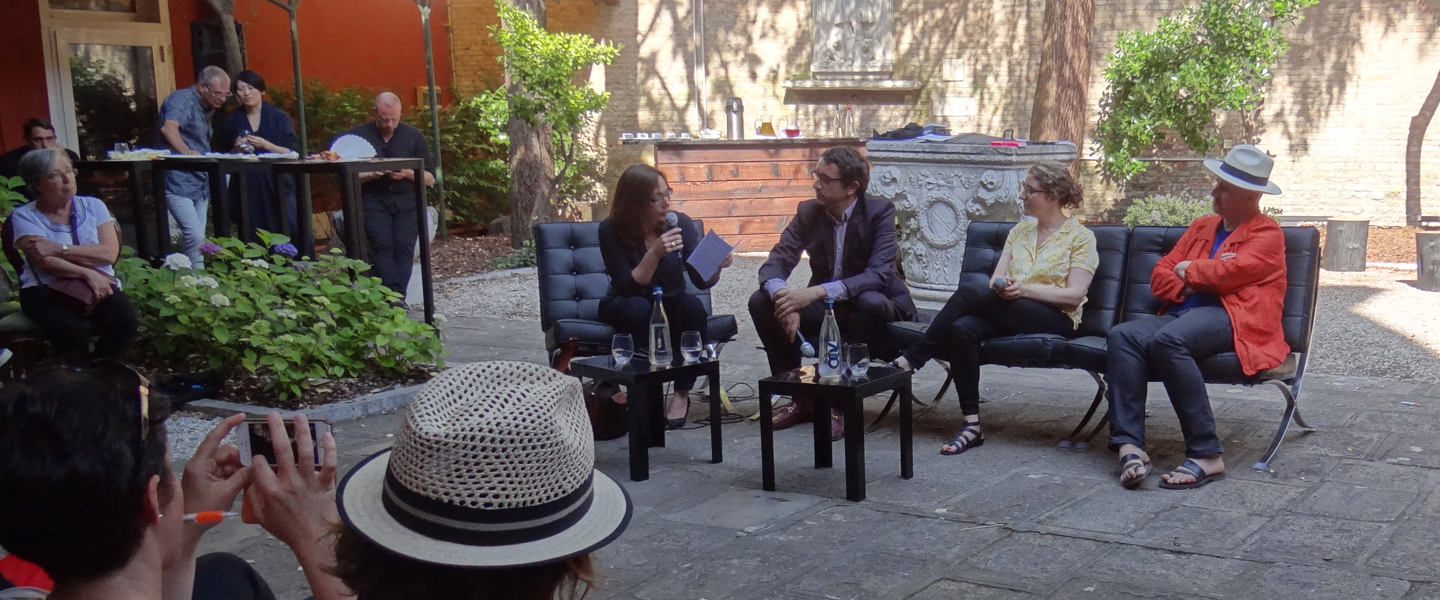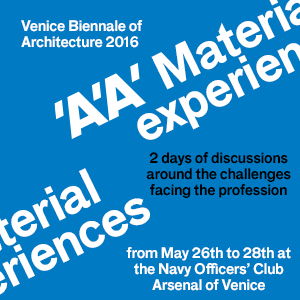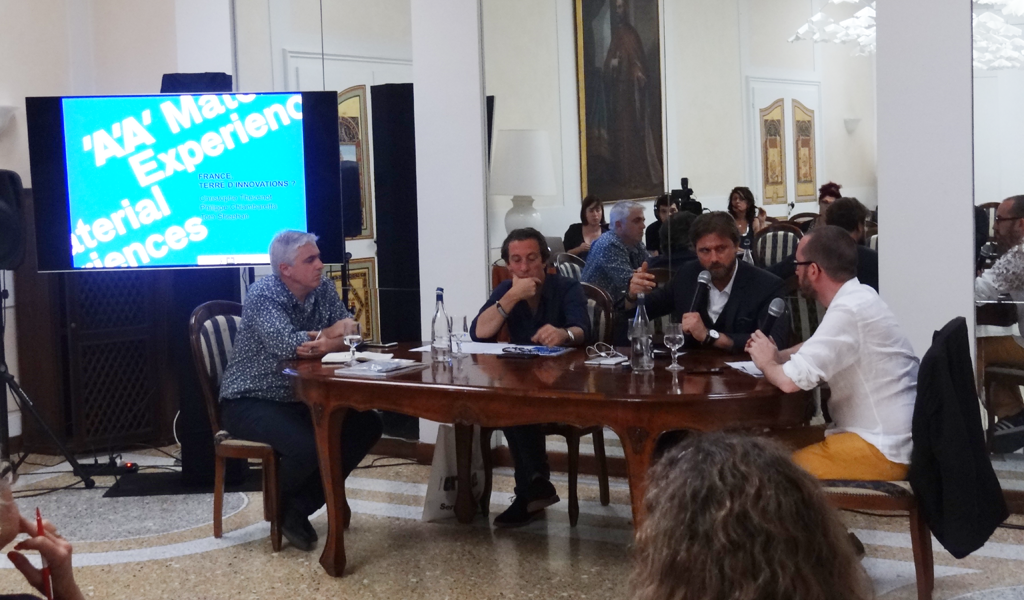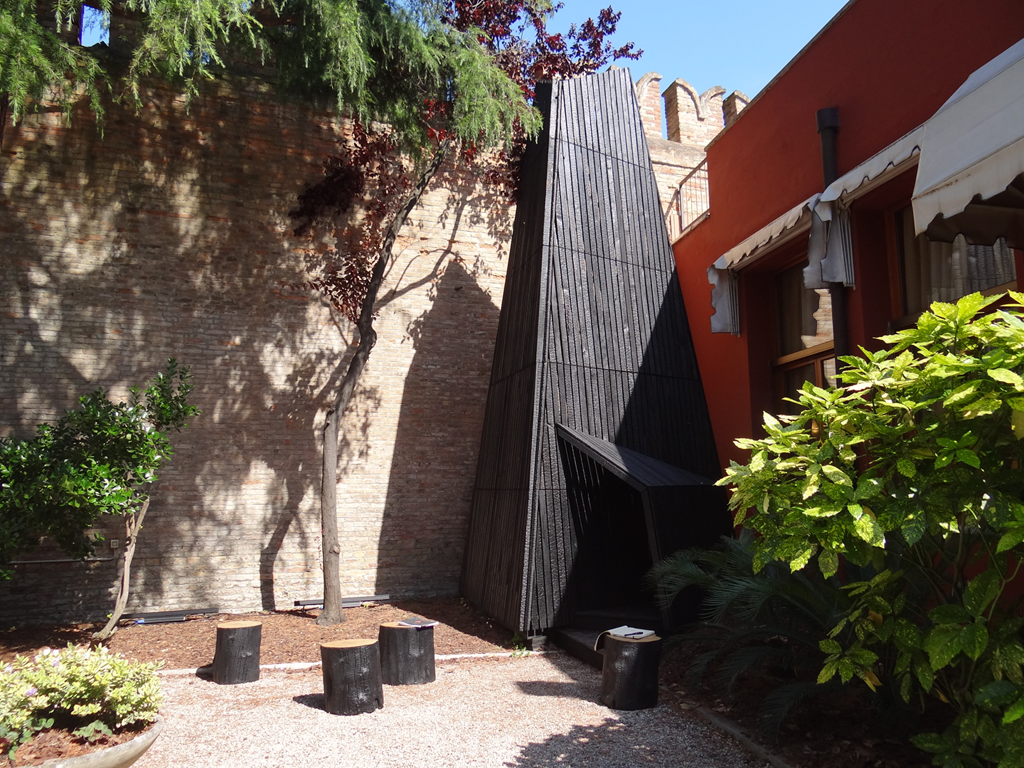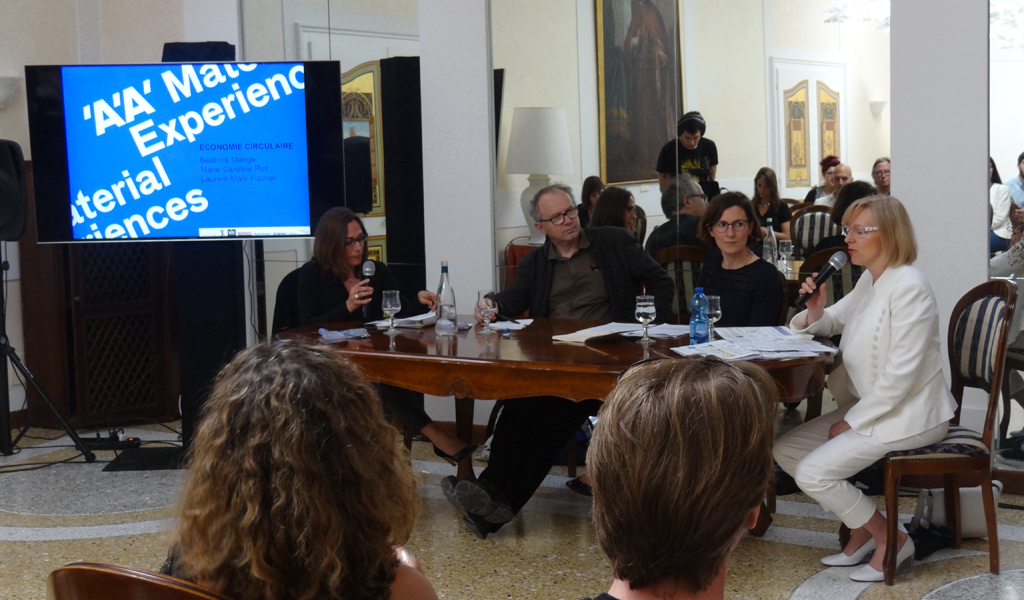Habitat, inhabiting, inhabitant(s)
Completing the abundant choice of exhibitions and events in the framework of the 15th Venice Architecture Biennale’s inauguration, AA organized, on May 27th and 28th, four discussions on the profession’s major challenges, between architects and companies. Among them, a roundtable brought together Guillaume Loizeaud, director of the construction division of Reed Expositions, and the curators of the French Pavilion, Frédéric Bonnet and Lucie Niney (representing AJAP 14 collective).
The central subject of this fourth and last discussion, held on the patio of the Navy Officers’ Club, was the user’s place in French architecture. Emmanuelle Borne, AA’s editor in chief, introduced the exchange between Guillaume Loizeaud, Frédéric Bonnet (Obras office) and Lucie Niney (NeM office) by highlighting “architecture that serves the inhabitant with a decidedly optimistic approach in which the strength of the common undertaking and the collective interest are primordial.” For the two architects and the director of Reed Expositions’ construction division, innovation is not only seen in large exceptional projects. This is moreover what the French Pavilion attempted to demonstrate this year in Venice with an exhibition resolutely focused on more ordinary projects made of simple responses and solutions, innovative in a straightforward way. A subject in line with the France special report published in AA 412 (May 2016), which features the views of international journalists on French architecture through a selection of 11 projects. At the top of the list of the most significant programs are collective and social housing, a typology of everyday life that overflows with innovations.
These innovations are also at the heart of Batimat, a professional trade shows run by Guillaume Loizeaud, held every 2 years, whose next edition will take place in November 2017. In the meantime, his team is working on an editorial project, using fields’ surveys and feedback from users of a selection of buildings, to see if these realizations have kept their innovative promises, under real conditions. “Above all, we want to select projects that are outstanding in terms of innovation,” said Guillaume Loizeaud. Lucie Niney considers this approach as “unexpected” on the part of a trade show organizer but also “valorous thanks to the dissemination of this architecture in which people live and work.” “The users’ stories are a great way to talk about architecture,” agrees Frédéric Bonnet. But doesn’t innovation need incentives or constraints to develop? The founder of the Obras office considers that “difficulty brings about innovation” referring to the economic constraints that architects are subject to in their projects. “Today, we are reinterpreting what already exists, we don’t reinvent our construction methods” he finally tempers. Lucie Niney wonders how users’ feedback can influence project design, in an innovation process mainly based on experience. “Manufacturers can take back their role as a know-how trainer […] as for the architect, his role is to synthesize the know-how of technicians who perform better than he does.” But how far would this architect-conductor be ready to go for the user?
—
For more information, Reed Expositions’ website, Obras’ office and collectif AJAP 14.

